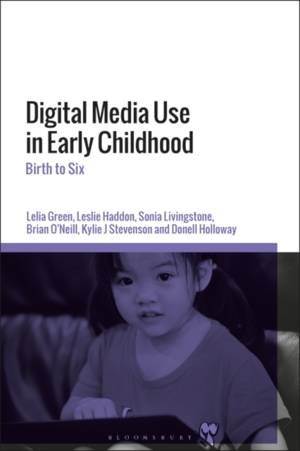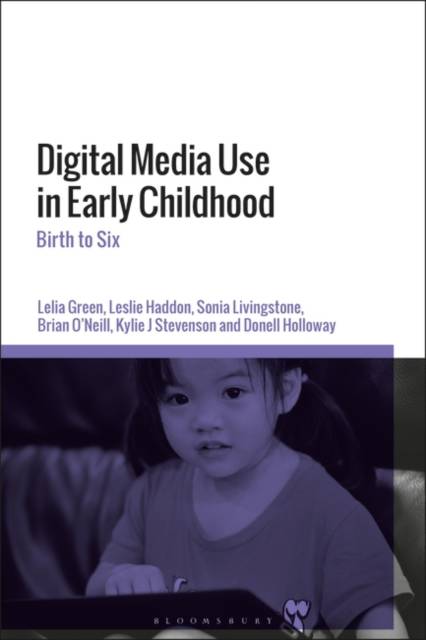
Je cadeautjes zeker op tijd in huis hebben voor de feestdagen? Kom langs in onze winkels en vind het perfecte geschenk!
- Afhalen na 1 uur in een winkel met voorraad
- Gratis thuislevering in België vanaf € 30
- Ruim aanbod met 7 miljoen producten
Je cadeautjes zeker op tijd in huis hebben voor de feestdagen? Kom langs in onze winkels en vind het perfecte geschenk!
- Afhalen na 1 uur in een winkel met voorraad
- Gratis thuislevering in België vanaf € 30
- Ruim aanbod met 7 miljoen producten
Zoeken
Digital Media Use in Early Childhood
Birth to Six
Lelia Green, Leslie Haddon, Sonia Livingstone
Hardcover | Engels
€ 203,95
+ 407 punten
Omschrijving
The easy interface of touchscreen technologies like tablets and smartphones has enabled children to access the digital world from a very young age. But while some commentators are enthusiastic about how this can open a new world for fun, learning, and developing digital skills, others see the dangers of yet more screens, inauthentic play, and time spent isolated with electronic babysitters that detract from interaction with parents and learning social skills. Taking five as the age when children transition into formal education, this book draws on a three-year research project examining the realities of under six-year-olds' experiences of these technologies in the UK and Australia. With a theoretical context including Vygotsky, Bruner, Bronfenbrenner and Flewitt, the book examines how parents of young children evaluate the opportunities and risks of children's digital media use in the context of other significant influences such as children's time with grandparents, early childhood care and education. Drawing on in-depth interviews with 22 families, and rich ethnographic data from observation and exchanges with their 29 children, aged four months to five years, the book reveals how digital technologies complement and challenge important aspects of daily life for infants, toddlers and preschoolers.
Specificaties
Betrokkenen
- Auteur(s):
- Uitgeverij:
Inhoud
- Aantal bladzijden:
- 268
- Taal:
- Engels
Eigenschappen
- Productcode (EAN):
- 9781350120273
- Verschijningsdatum:
- 11/07/2024
- Uitvoering:
- Hardcover
- Formaat:
- Genaaid
- Afmetingen:
- 156 mm x 234 mm
- Gewicht:
- 553 g

Alleen bij Standaard Boekhandel
+ 407 punten op je klantenkaart van Standaard Boekhandel
Beoordelingen
We publiceren alleen reviews die voldoen aan de voorwaarden voor reviews. Bekijk onze voorwaarden voor reviews.









